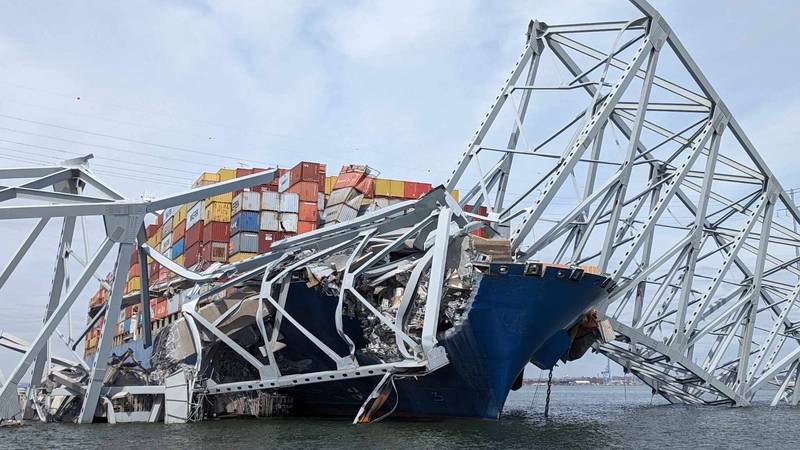Bridge Collapse Freezes Ship Traffic in Port of Baltimore
Ships sailing to the U.S. port of Baltimore dropped anchor in waters nearby while vessels were stranded inside the port after traffic was halted following a bridge collapse, shipping data showed on Tuesday.
A 948-foot container ship smashed into a four-lane bridge in the port in darkness early on Tuesday, causing it to collapse and sending cars and people plunging into the river below.

Port traffic was suspended until further notice, Maryland transportation authorities said.
At least 13 vessels that were expected to load coal were anchored near to Baltimore port, according to analysis from data and analytics group Kpler.
Other vessels waiting nearby included container and cargo ships, separate ship tracking data from MarineTraffic showed.
Three vessels inside the port had been due to load commodities, while other smaller ships, including pleasure crafts, were also unable to leave, separate data showed.
The Klara Oldendorff, one of the dry bulk vessels inside Baltimore port, was undamaged but ship transits were halted until further notice, the vessel's Germany-based owner Oldendorff Carriers told Reuters.
Container shipping traffic was also impacted.
Top Danish container shipping group Maersk said due to the damage to the bridge and resulting debris, it was omitting Baltimore port from all its services "for the foreseeable future, until it is deemed safe for passage through this area".
The container ship Dali, which collided with the bridge on Tuesday, was chartered by Maersk at the time of the incident in Baltimore.
"With most of Baltimore's port terminals and all of its container terminals behind the collapsed bridge, containerized exports at or planning to depart from Baltimore will either need to wait until the waterway re-opens, or be rerouted by truck or rail to alternate ports," said Judah Levine of global freight platform Freightos.
Those could include Philadelphia, or the more major hubs like Norfolk, New York and New Jersey, Levine said.
"Exporters choosing these options could face increased trucking and rail rates if enough volumes are shifted to other ports."
Baltimore port's private and public terminals handled 847,158 autos and light trucks in 2023, the most of any U.S. port.
The port also handles farm and construction machinery, sugar, gypsum and coal, according to a Maryland government website.
It was unclear how many car carriers were affected.
"While Baltimore is not one of the largest U.S. East Coast ports, it still imports and exports more than one million containers each year, so there is the potential for this to cause significant disruption to supply chains," said Emily Stausbøll, market analyst at Xeneta, an ocean freight shipping rate benchmarking and intelligence platform.
Stausbøll said the incident would add to challenges to ocean freight services - including drought in the Panama Canal and attacks on Red Sea shipping - which have pushed Far East to U.S. East Coast rates up by 150% in recent months.
(Reuters - Reporting by Jonathan Saul; editing by Kirsten Donovan, Jason Neely and Ros Russell)
